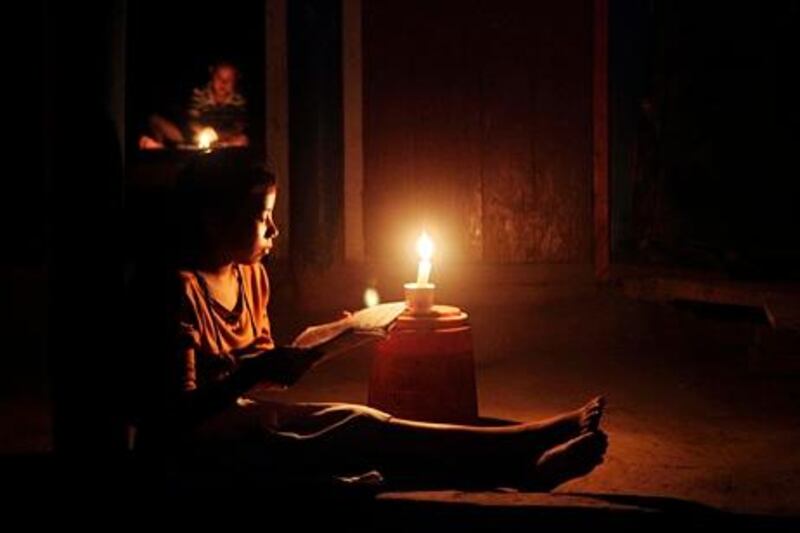India's green energy sector is facing a slew of challenges, despite the government's efforts to boost investment.
India has introduced a range of initiatives in recent years to spur growth in the clean energy industry. These including allowing 100 per cent foreign direct investment in the renewable energy sector and various tax incentives.
"Renewables are facing several challenges," says Sanjay Kaul from the executive council of the Centre of Policy Initiatives and Energy Studies. Despite policy and regulatory level incentives, future investment in the sector is being hampered, he says.
"Provisions like exemption of excise duty and concessions on custom duty are very difficult to avail," Mr Kaul says. High borrowing costs are also a factor holding back growth in the sector.
"The wind power investment climate has not recovered since withdrawal of the accelerated depreciation incentive," he adds, referring to the government scrapping one of its tax incentives last year.
The issue of opening up more avenues of energy production is particularly pressing given the country's economic growth ambitions and its burgeoning population. India has long struggled to meet the country's demands for energy.
There are 600 million Indians without access to electricity, according to the planning commission of the government of India.
There are also regular power outages in many parts of the country.
"India faces formidable energy challenges," according to a recent report by the International Energy Agency (IEA).
"It relies heavily on fossil fuels and its energy demand is set to grow more than fourfold over the coming decades.
"Current trends will drive up imports of fossil fuels, local pollution and greenhouse gas emissions, and put energy security at risk," it says.
"But India is also well placed to take advantage of new clean energy technologies that could head off these dangers, with a solid engineering base and a strong, innovative private sector that has consistently surprised the world with pioneering and affordable technology solutions."
Costly fossil fuel imports are also a drain on the country's economy.
India is in second-to-last place on the World Energy Council's energy sustainability index (below it: Senegal).
But many companies have recognised the importance of green energy solutions in India.
India's Tata Power says it is going "all out" to step up its efforts in the clean energy sector. Tata Power, which is India's largest private thermal power generator, is working on initiatives in wind, hydro, solar, and geothermal energy.
"By 2017, we aim to have 25 per cent of our total power generation from renewable and carbon neutral sources," says Tata Power. The company is aiming to more than double its production of solar energy to about 250 megawatts by 2017.
"With the setting up of the National Solar Mission, this area has received a huge boost," it adds.
GE Energy Financial Services has also invested in India's wind energy projects as part of a US$115 million venture.
India's prime minister, Manmohan Singh, spoke about the importance of renewables for India at a green energy conference held in New Delhi last month.
"Energy is both scarce and expensive and yet it is vital for development," he said.
"We are taking steps to exploit non-conventional clean energy sources such as solar and wind power, and also energy from the bio mass. It is proposed to double the renewable energy capacity in our country from 25,000MW in 2012 to 55,000MW by the year 2017.
"Costs are falling. The cost of solar energy, for example, has nearly halved over the last two years, although it remains higher than the cost of fossil fuel based electricity."
The IEA highlights that, despite the challenges, significant progress has been made. "India has managed to switch from being an importer to becoming a net exporter of products and components used for wind, solar and hydro power, its report says.
Imports of such components into India rose by 172 per cent between 2005 and 2008, totalling $2.8 billion in 2008, while exports increased by 494 per cent to reach $3bn in 2008, the IEA says. "Based on patent data, India presents above average competence in hydropower and solar thermal power, and it has acquired export specialisation in wind power systems, playing an important role as a technology innovator.
"Recent initiatives to establish dedicated university and training courses for new energy technologies, including solar … will go a long way … to prepare human resources for the challenges ahead."





